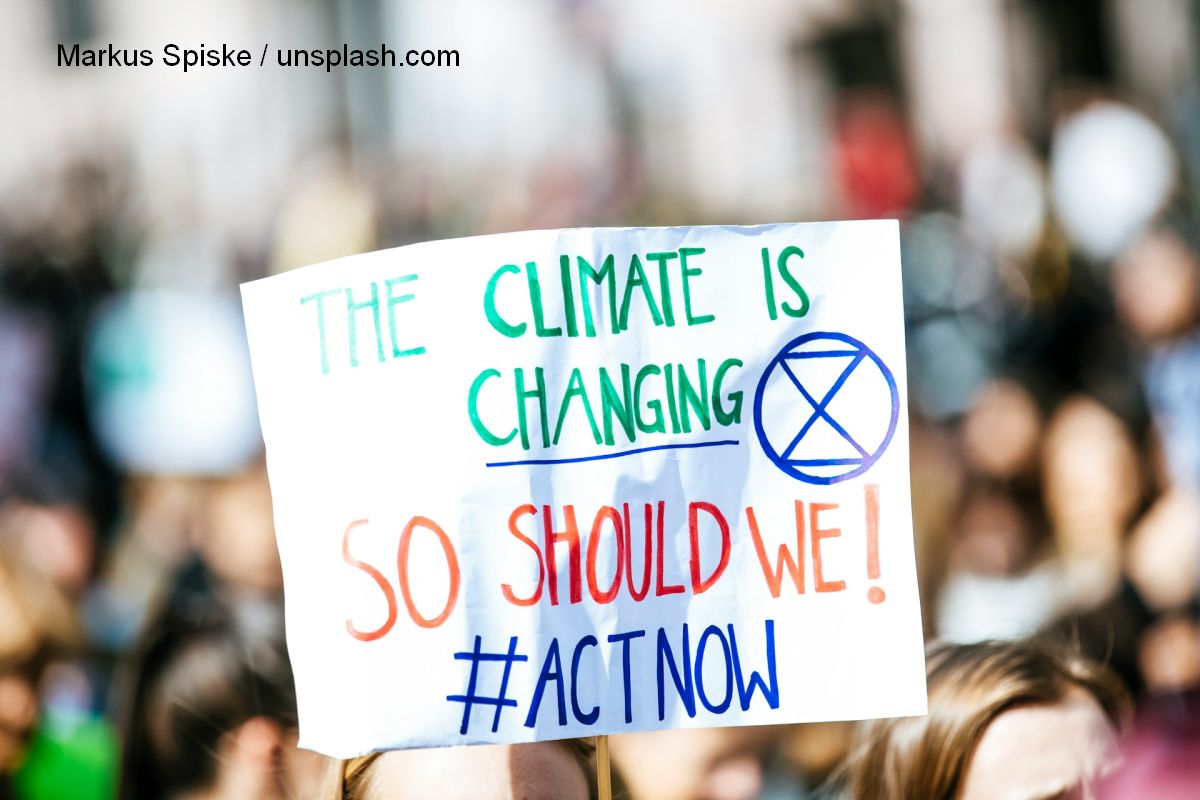Climate Change Myths and Realities
Recent studies show that fossil fuels are responsible for 90% of human-made carbon dioxide emissions

Iulia Hau, 14.05.2025, 13:28
Recent studies show that fossil fuels are responsible for 90% of human-made carbon dioxide emissions, are increasing annual temperatures, acidifying the oceans and accelerating the risk of species extinction. It is estimated that one in three species will disappear in the next 50 years if the fossil fuel industry is not fundamentally transformed.
Daria Hau, with a master’s degree in International Trade Law in the context of climate change from Amsterdam, and a former advisor to the Ministry of the Environment, argues that the discussion about climate change is shrouded in myths.
“There are at least two myths that come from big polluting companies that have not yet been properly debunked — the plastic recycling myth and the technological myth. Many of us have grown up with the idea that if we recycle conscientiously, we are protecting the planet. And recycling is important for many materials, but in the case of plastic, in particular, it is an incomplete story, even misleading, because in reality, most of the plastic produced globally, over 90%, does not end up being recycled at all. Most types of plastic are neither made to be recycled nor will they ever be. And this myth works like a smokescreen. We make ourselves feel guilty for the packaging in our homes for what we buy, while the production of single-use plastic is constantly increasing. The second myth is the technological myth, that is, the idea that we do not urgently need to reduce emissions, because soon we will have these miraculous solutions, such as carbon capture from the atmosphere. The problem is that these technologies are extremely expensive and, as a side note, they are heavily subsidized. So, in addition to being very expensive, they are inefficient and marginal on a global scale. They are promoted mainly by the big oil companies, who are trying to create the illusion that we can continue with the extraction of oil and gas, because later we will clean up the emissions somehow through these technologies. Here I am even paraphrasing an oil company CEO, who said live that this type of technology gives the industry a license to operate for another 70-80 years. So even in their words, this is the goal: to allow the industry to continue polluting, with the promise of very advanced technologies that will clean everything up”.
Daria Hau emphasizes that these solutions, recycling and technological developments, are not useless or that we should not invest in them. The problem is that they are exaggeratedly presented as a panacea, a universal solution to the climate crisis. In reality, they serve to distract attention from what really matters, which is holding big polluters accountable and adopting bold, systemic climate policies. The expert argues that another method of greenwashing (facade environmentalism) used by polluting companies is the overemphasis on individual responsibility:
“Slogans like ‘Change starts with you’ or ‘What are you doing to protect the environment?’ which is a good question in essence, which we should be asking ourselves, but when it is asked by big polluters to distract us from asking them, in fact, what exactly they are doing, then it becomes a problem of greenwashing. The most important example for me is the oil company that in the 2000s launched the concept of the personal carbon footprint, along with an online calculator that said how much carbon dioxide you as an individual actually emit, to live, to work, to live your life. The results of this PR campaign, because that’s what it was in fact – a PR campaign with absolutely no scientific basis, we still feel them today. We have local companies that copied the campaign, and in turn pushed the idea that we are responsible in our daily behavior. Unfortunately, we cannot stop the climate crisis just by selectively collecting waste or riding a bike. Real change must come first from public policies that encourage us to shape our behavior and, secondly, from reducing emissions at the source, that is, where they are massively generated by industry.”
Daria Hau believes that we, as ordinary citizens, do not have the ability to fight the climate crisis, but that we do have the power to inform ourselves, vote, and know what to demand from the leaders who dictate the direction we are heading. Asked what the real solution to the climate problem is, beyond the myths and smokescreens, the expert answers:
“I think the first thing we need to do is be very clear about the cause. Fossil fuels are at the heart of this crisis that really endangers the stability of life on Earth, in all its complexity. Every step of the fossil fuel chain generates greenhouse gases that warm the planet, cause millions of premature deaths, trillions of dollars in damage, and an ever deeper destabilization of ecosystems. So if we really want to reduce the effects of global warming, we need to focus on stopping our dependence on these sources. Obviously, we need to have a just transition for workers and communities dependent on fossil fuel energy. So we need to look very carefully at those who are affected much worse by fossil fuels: children, women, especially in the global south. And all of this needs to happen by 2050 at the latest – if we want to have a chance of not exceeding the critical threshold of 1.5°C by so much that, as it seems and as studies show, we are currently slightly exceeding it.”
The Country Report on Climate and Development for Romania, issued by the World Bank in 2023, showed that Romania has the potential to triple its national income in the next 30 years if it continues to take measures to strengthen climate resilience and reduce carbon emissions. The same document specified that Romania faces high vulnerability to the risks generated by climate change, especially in terms of floods and drought. The level of carbon dioxide generated by the Romanian economy is 2.5 times higher than the European Union average, and rising temperatures and intensifying heat waves represent real dangers for the population, economy and infrastructure.






























